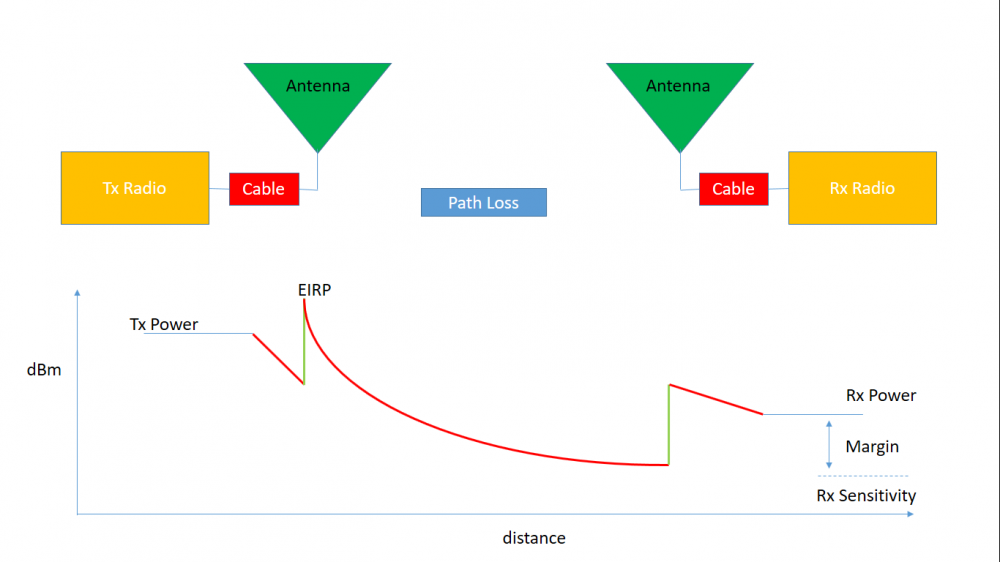Link Budget
Caveat lector: https://www.slideshare.net/sitimunirah88/link-budget-calculation - this is a more comprehensive treatment
What is a link?
- Literally, something that connects one element of interest to another.
- In this case it’s the entire abstract entity that exists between the transmitter and the receiver.
- This comprises the physical channel and its parameters, such as:
- Distance between the transmitter and the receiver
- The electromagnetic properties (permittivity, permeability, dispersiveness etc.) of the intervening medium
- There are also systemic parameters:
- Transmitter power
- Gain of the transmitter antenna and the gain of the receiver antenna
- Noise floor of the receiver
- And also operational parameters such as:
- Bit-rate
- Modulation scheme used, Error rate of modulation
- Amplifier gains at the receiver and transmitter ends
In essence link budget is like a set of calculations giving the feasibility and performance summary of a particular communication link from the transmitter to the receiver end. In case of satellite, which is a moving object it is calculated for the whole region, from where you want to receive, typically a cone.
Calculation of the Link Budget
There are two different ways to calculate link budget. Each has its own use:
- SNR (Signal to Noise ratio) Method: The calculations using this method reveal what power of signal can we expect to receive at the antenna, and whether it is above the noise floor. It also reveals the difference in signal and noise power. Greater the signal to noise ratio, better is the signal received.
- Ex: ISS signals are received by everyone, but not everyone can receive the signals transmitted by a small satellite. This is because ISS has powerful transmission. Looking at the image below, you can clearly say, greater Tx power translates to better Rx power. That is if I shift Tx power upward by 1 dBm, the whole link shifts upward by 1 dBm,increasing the link margin.
- Eb/No Method: It is used in particular for digital modes of transmission. The exact meaning of Eb/No is better explained by this document. In a way, it signifies the signal to noise ratio of a digital communication protocol. The link margin helps determine the error in received bits i.e. If I receive with a bit error rate of 10^(-3) , 1 of every 1000 bits is likely to be faulty. Increasing data rate (bits/s) decreases the Eb/No margin and the bit error rate increases. Thus we would need to power the transmission more. There is always a data rate vs power trade off while deciding the design of a satellite.
Miscellaneous
- Link budget is calculated for all signals uplink, downlink and beacon separately.
- Link budget calculations give a very good set of estimates, eg. what should be the signal power, amplifier gain and thus help in decision making during satellite building phase.
- Link budget calculations are done before starting design to get estimates of requirements and later after completing design to check whether the requirements are met.
- AMSAT-UK provides a template of excel sheet that can be used for calculating link budget of satellite signals, by tweaking with known data.
If you are done reading this page, you can go back to Communications Subsystem.

